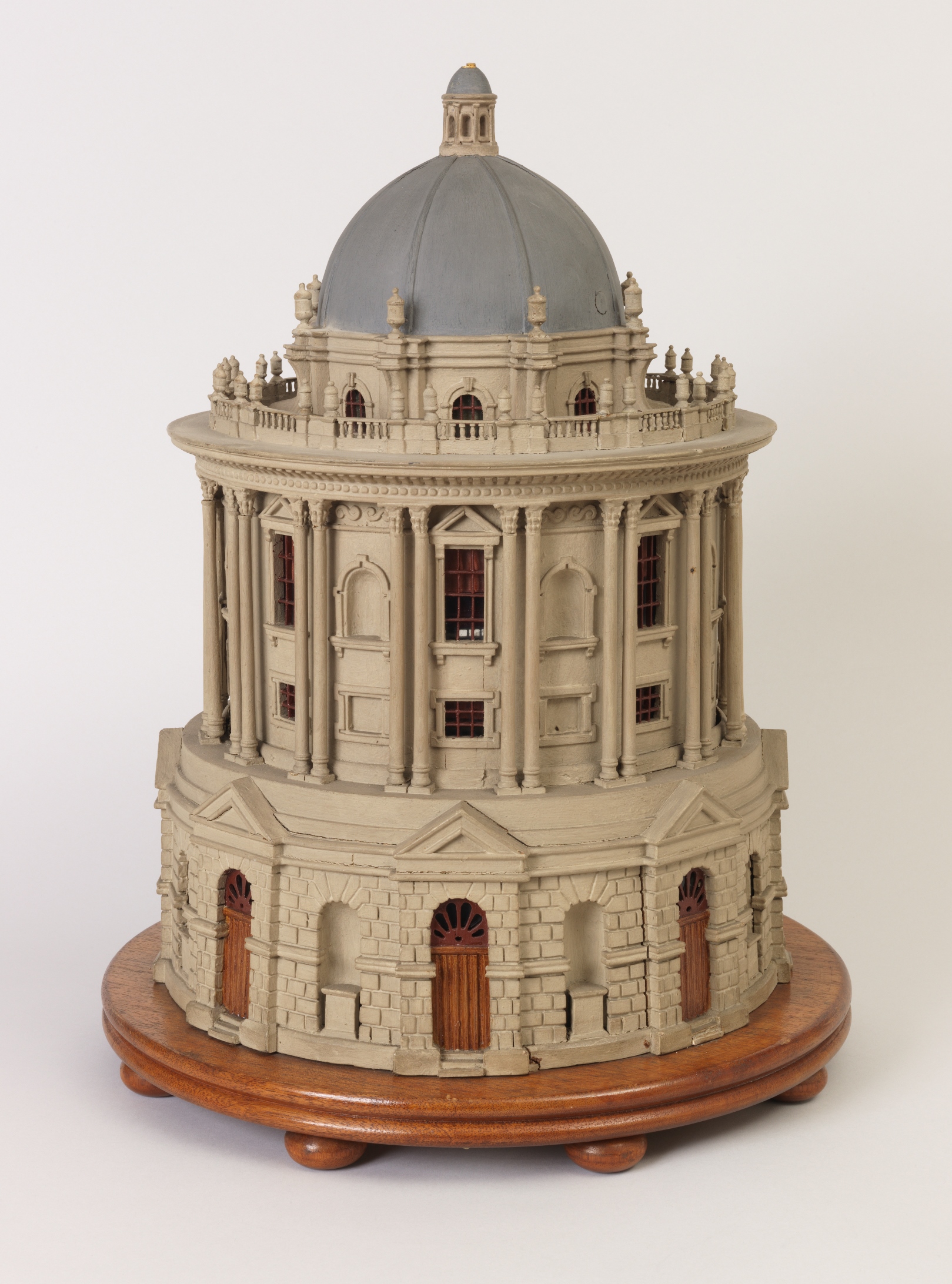Anyone who has seen Inspector Morse or Lewis pursue the latest murder in the academic city of Oxford, England, will recognize this beacon of academia rising up amidst the Gothic colleges of Oxford University. Centrally located it is an important architectural landmark, designed in baroque style with Palladian elements to be the university’s Radcliffe Science Library. The architect, James Gibbs (1682-1754) one of Britain’s foremost architects of his era, had studied in Rome to better understand the principles of ancient classical and Renaissance architecture.
Gibbs’s design shows the influence of an earlier design, also circular with rustication and columns , by architect Nicholas Hawksmoor who produced a wood model of ca 1714-15 that survives at the Bodleian Library at Oxford, of which the Radcliffe Camera is now part. In fact it is a reading room of the Bodleian, which is appropriate since the name “camera” is from the Latin for room. The camera was named for Dr. John Radcliffe, a physician who was Physician to the monarchs William III and Mary of England, was also a member of parliament and scientist, who bequeathed a trust to Oxford University at his death in 1714. While other sites in Oxford bear his name, including an infirmary, the architectural distinction of the Radcliffe Camera makes it the most famous part of his legacy. The circular form makes reading the central activity and the books arranged around the readers create a spirit of a community of like-focused scholars.
The building–and the model–demonstrate the importance of architecture as inspiration and the desire to “collect” buildings that are inspirational. The latter is generally impossible unless one collects models of them. Architects not only use models to help explain their designs to patrons, but they appreciate good models as enabling them to investigate a building for form, decoration and the relationship of spaces as well as a concept. They see them as presentation and collectible objects that also teach. Most others see them as beautiful examples of craftsmanship and execution that call up a beloved building or design. It is not surprising that architects and designers often collect architectural and staircase models, as they recognize best what has gone into their creation.
One of the first known architects to collect architectural models was English architect Sir John Soane (1753-1837). He created a whole model room in his house and office in Lincoln’s Inn Fields in London (now the Soane Museum ) where his students could learn about some of the great buildings of antiquity and the Renaissance from models rather than having to make the Grand Tour. Buildings many miles apart could be compared.
This model shows the enduring fascination of both the Radcliffe Camera and of model making. It replicates the rustication of the lower level with carved and painted gesso on wood. The columns are carefully turned and the windows have real glass in them. This attention to the inspired execution of minute detail is what gives good models their particular allure beyond that of the buildings they represent.
This staircase model will be on view beginning December 12th in the Models & Prototypes Gallery, one of Cooper Hewitt’s opening exhibitions.
Sarah Coffin is the Head of the Product Design and Decorative Arts Department at Cooper Hewitt Smithsonian Design Museum. She curated, among other exhibitions, Made to Scale: Staircase Masterpieces The Eugene and Clare Thaw Gift.

One thought on “An Epicenter of Learning: The Radcliffe Camera”
lauren milton on December 1, 2014 at 5:36 am
Can I suggest you have a look at these models http://www.timothyrichards.com . Timothy has been making these exquisite plaster models for the last 25 years, including many projects for the Bodleian Library and Sir John Soane museum.